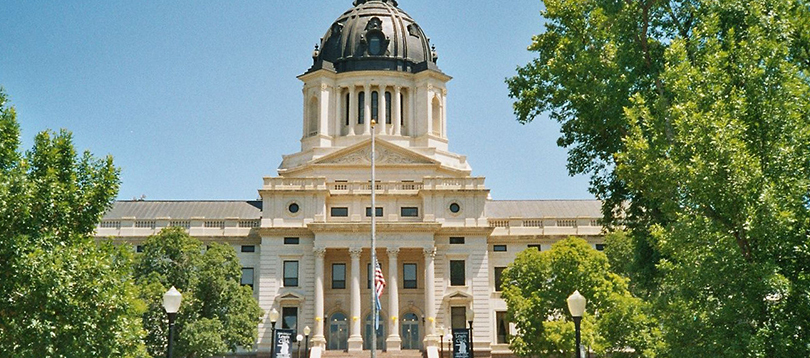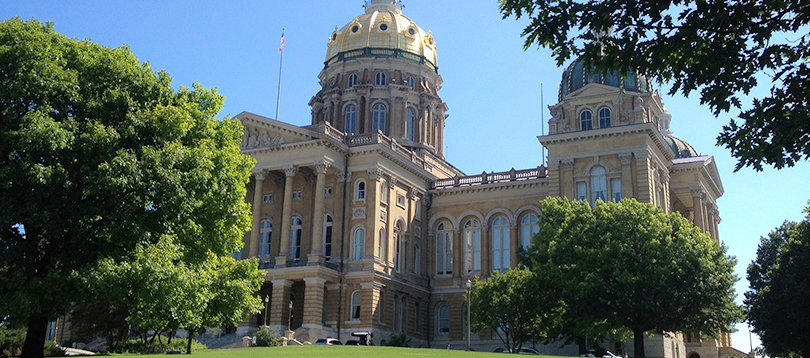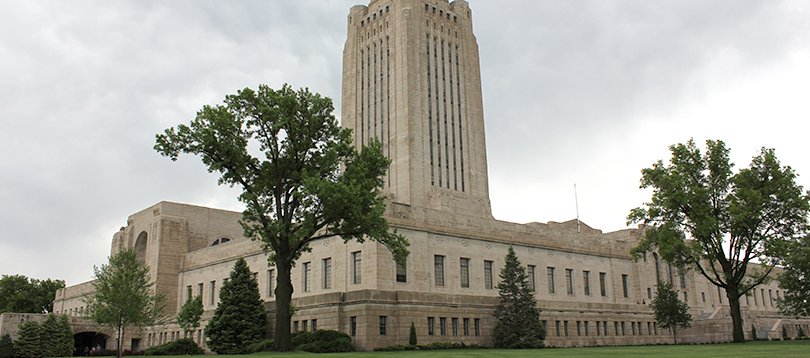CEO’s Report: State Legislative Sessions kick off, begin planning for new year
January 4, 2022Turning the page on a new year often brings reflection on the past year and resolutions for the new.
While many were happy to slam the book on 2021, as I look back, I see a lot of positive things we can be grateful for. We were finally able to meet in person again, bringing customers together for educational opportunities. We once again announced steady rates, served our communities proudly and aided in the growth and development of those communities.
As we look forward to 2022, we look forward to accomplishing all those same feats and more. We will hold a planning session in January with our board of directors to set goals for the new year and discuss strategies to best serve our customers.
With the start of a new year also comes the start of new state legislative sessions. Many state coffers look different this year as many ended the last fiscal year with a large surplus. As the legislative sessions get underway, legislators will have decisions to make as to how to best and most responsibly allocate funds.
Below are brief overviews of each state in which Heartland serves customers as the new year starts off.

Minnesota
The Minnesota Management and Budget Office (MMB) recently released its November budget forecast revealing a $7.7 billion surplus for the state. With this news, groups are already lining up with requests for state investments. Amongst these requests, action to address the increasing cost of energy, including energy assistance, has frequently been listed as a top priority for both Republicans and Democrats.
Senate Majority Leader Jeremy Miller was recently quoted saying, “The budget surplus gives our state a lot of options to make the lives of Minnesotans more affordable. With inflation, increasing energy prices, and continued economic hardship, it’s more important than ever for us to partner together to make sure families have the resources they need to thrive.”
For several years, the legislature has been vehemently divided on energy policy. However, during the 2021 legislative session, the two parties were able to come together and pass a compromise energy package that protects both industry and consumer interests. Following passage, House Speaker Melissa Hortman said, “Our Commerce & Energy budget takes strong steps to protect Minnesota consumers and student loan borrowers and grow our clean energy economy.”
DFL controlled House and GOP controlled Senate still have stark differences on energy policy, but the work in 2021 could be a positive sign of diplomacy. Leading into the 2022 legislative session, Democrats continue to focus on climate change and investing in sustainable and renewable energy sources, while Republicans aim to provide energy security and reliability via more traditional sources. Although they will have different approaches to solve the issue, both sides will be looking to address rapidly increasing home heating costs.
The Minnesota State Legislature convenes January 31.

South Dakota
South Dakota ended the 2021 budget year on June 30 with a surplus of $85.9 million. Total general fund revenue for fiscal year 2021 finished $62 million higher than adopted estimates, and the state general fund budget ended with expenditures approximately $23.9 million lower than budgeted.
In her budget address December 7, Governor Kristi Noem highlighted South Dakota’s strong economy and resulting strong revenues. She advised the legislature that there are $215.5 million in one-time dollars for fiscal year 2022 and $157.6 million in ongoing general funds. The state also has American Rescue Plan (ARPA) dollars from the federal government available.
Governor Noem highlighted several key funding initiatives to invest in South Dakota’s workforce, build infrastructure for the future, and strengthen public safety.
Of note, investments in South Dakota’s workforce as laid out by Noem include $30 million to facilitate new cybersecurity training at Dakota State University, $200 million in workforce housing, and $17 million to enhance workforce training capacity at the state’s technical colleges.
The South Dakota Legislature convenes in Pierre January 11.

Iowa
Iowa Governor Kim Reynolds said their state closed FY2021 with a general fund surplus of $1.238 billion. That amount is $751 million more than the prior estimate of $487 million, according to the Iowa Legislative Services Agency.
Reynolds touted the surplus and repeated her pledge to follow up on a wide-ranging tax cut she signed into law this year with further cuts.
“We will continue to cut taxes in Iowa,” she said. She’s previously said Iowa will look at lowering individual income taxes next year.
Reynolds told a public hearing on the state’s fiscal 2023 budget: “I looking forward to working with the Legislature to pass generational tax relief which I believe we have the capacity and we absolutely should be moving in that direction. We’re going to come (this) year with a comprehensive, ambitious tax plan that will really make Iowa competitive and I think really help spur economic growth in the state of Iowa, so I’m really excited about that.”
The Iowa Legislature gets back to work January 10.

Nebraska
The 60-day Nebraska state legislative session kicks off January 5. Like other states, Nebraska will be sitting on a large pile of pandemic relief and infrastructure money.
The State of Nebraska utilizes a biennial budget for revenues, appropriations, and expenditures. Anticipated state tax revenue exceeds projected state spending during the current two-year budget cycle by more than $400 million and $1 billion dollars in federal pandemic recovery funding awaits one-time investment and distribution.
Allocation of the pandemic relief package will be decided by the Legislature after Gov. Pete Ricketts weighs in with his recommendations.
An additional $3 billion in federal infrastructure funding will be available for highway construction, bridge repair, expansion of rural broadband service and other purposes, with $2.5 billion of that total targeted to roads.
As always, Heartland will continue to monitor legislation in all states we serve customers and keep you apprised of any developments. Here’s wishing you health and happiness in the new year.
